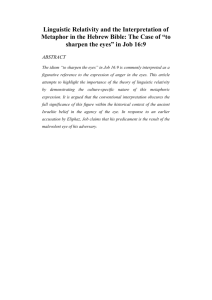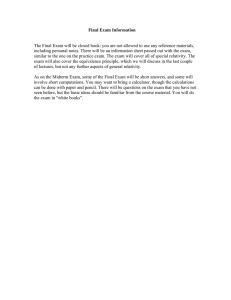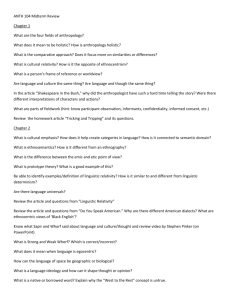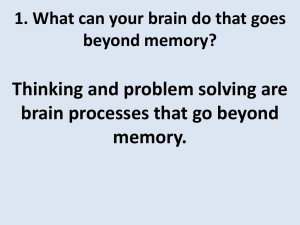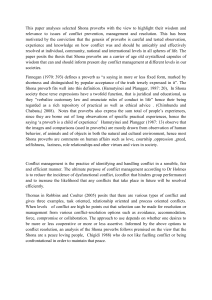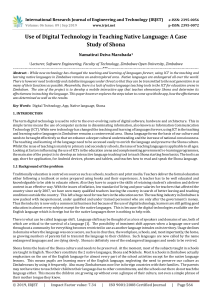Language how we combine spoken, written words as we think and communicate
advertisement
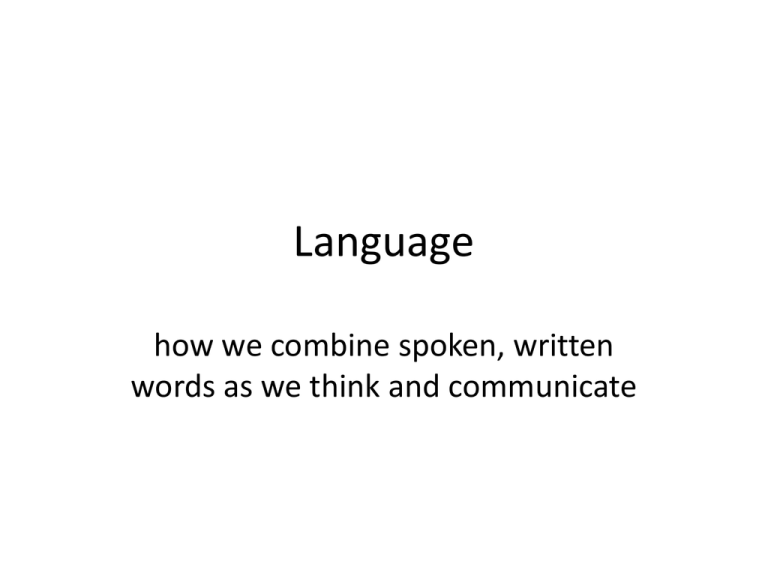
Language how we combine spoken, written words as we think and communicate Structure Phonemes – smallest distinctive sound unit dogs, stop, thoughtful, indistinguishable Morphemes – smallest unit that carries meaning dogs, stop, thoughtful, indistinguishable Grammar – a system of rules that allows us to understand one another • • Semantics – the study of meaning in language (“-ed” means past tense) Syntax – a set of rules for combining words in a sentence (white house vs. casa blanca) Development Babbling stage (good chart in book, p. 376) • • Begins around 4 months – make random noises of all Around 10 months – babbles restricted to noise of home language One-word stage • • Around 12 months word learning begin to explode around 18 months Two-word stage (telegraphic speech) • • Around 24 months Follows rules of syntax After age 2, children very quickly develop long phrases Explaining Language Development Skinner – language is learned like everything else– through association, imitation, and reinforcement. Chomsky – although specific language is learned, children are pre-wired with a capability to learn language. Brain is like a language-acquisition device. • Statistical learning theory – infant brain has innate capacity to statistically analyze language; this ability seems to be present only in the first few years of life (critical period) Nurture Nature Practice Linguistic relativity • Whorf’s hypothesis that language influences the way we think Basic Color Terms English purple Shona cipswuk a Bassa Blue Green citema hui Yellow Orange cicena Red cipswuk a zðza Color delineations are arbitrary. But once we make them, they affect us. Native shona speakers report that blue and green are more similar than blue and purple, for example. Linguistic relativity • Language influences personality – Bilingual Americans and Mexicans took personality tests in each language. Both were more extraverted, agreeable, and conscientious when tested in English. • A man and his son get into a car accident and are rushed to the hospital. Both are in critical condition and rush to separate emergency rooms. The doctor enters the room to operate on the boy and says, “I can’t operate. This is my son.” How is this possible? • The generic he. Thinking without language • Mental imagery has been shown to increase performance (piano, free throws, golf, darts, even studying!)
